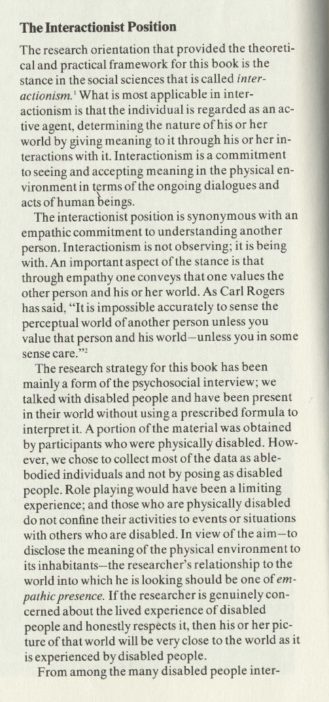A clipping from Design for Independent Living: The Environment and Physically Disabled People offers insight to the theoretical framework for the Lifchez and Winslow’s research on designing for disabilities.
Interactionism is a perspective within the discourses of psychology and sociology, lending itself to the authors’ agenda of celebrating architecture “as a social art”.
Essentially, an interactionist perspective says meaning is created in the world through our interactions with people and physical structures, which then inform social stratifications based on gender, race, class, and ability. It also emphasizes the importance of connecting with humans on an deep empathetic level: “Interactionism is not observing; it is being with.”
Ray’s studio courses, which invited people with disabilities as design consultants, used an interactionist perspective in its teachings empowering people with disabilities as active partners in student’s design projects. It’s a community-based model that we still see today across disciplines.
